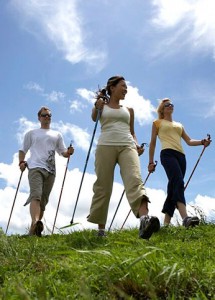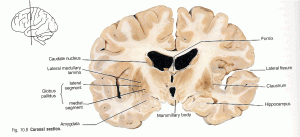As midterms are quickly approaching, many of us are trying to retain and cram as much information as we can into our brains. If it hasn’t already become apparent, most of us will realize that our brains can only store a limited amount of information. Fortunately, there appears to be a way to expand and boost our memory, and that is simply through aerobic exercises.
Image from: www.runningrules.com
In a recent article published by Science News (which can be found here), they reported a study that was highlighted in the Proceedings of the National Academy of Sciences. In this study, scientists discovered that adults who frequently performed aerobic exercise activities such as walking developed an increase in hippocampus volume. The hippocampus, which is a memory centre in the brain, normally decreases in size with age, however in the study the reversed occurred. They also found that the members had higher levels of Brain-derived neurotrophic factor (BDNF), which is a brain-aiding molecule.
Image from: www.library.thinkquest.org
Wikipedia article on the hippocampus: http://en.wikipedia.org/wiki/Hippocampus
Wikipedia article on Brain-derived neurotrophic factor (BDNF): http://en.wikipedia.org/wiki/BDNF
The study compared two different groups of adults aged 60 to 80. In one group, the adults did toning workouts such as weight training and yoga sessions for a year. While in the other group, the adults consistenly walked for three times a week. After a year, the group which simply did toning showed normal results, which consisted of some of the test subjects observing a decrease in hippocampus volume. On the other hand, the group that did a year of aerobic exercises observed roughly a 2 percent increase in anterior hippocampus volume.
If adults aged 60 to 80 can develop increases in the hippocampus by up to 2 percent, it begs the question of whether a younger study group would develop an even larger increase in their hippocampus. Hence, this study should be expanded to include a more diverse age group. Furthermore, why should the study stop there? They could also include teenagers, children, and possibly toddlers as well. Perhaps they might discover that people that have superior memory got that way by doing a lot of aerobic exercise during their childhood. It would also be interesting to understand why and how this process occurs. This is definitely a fascinating area of research, and it has great implications. It shows that exercise not only benefits the body, but the brain as well. So it is in everyone’s interest to maintain a healthy lifestyle and to keep fit.






